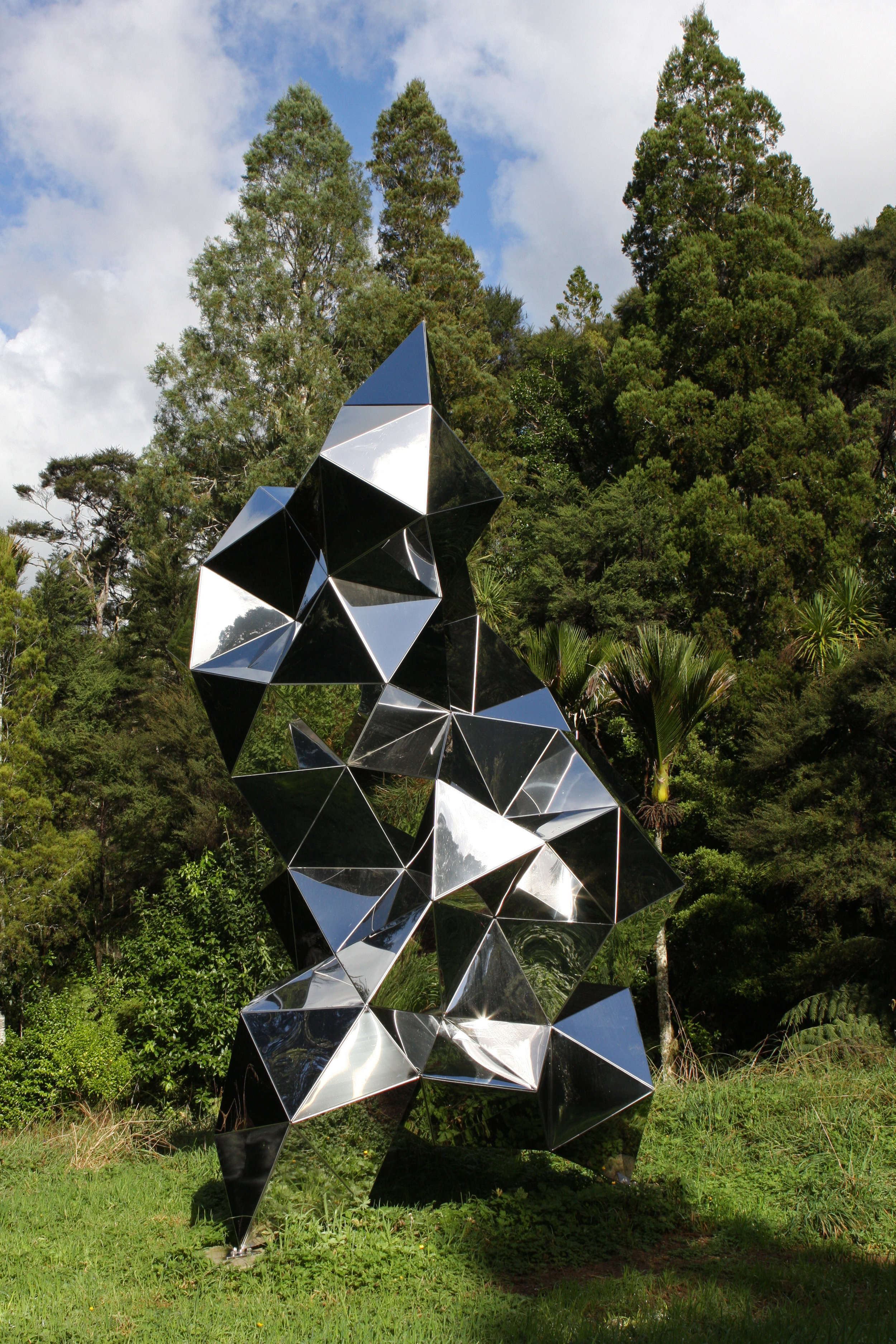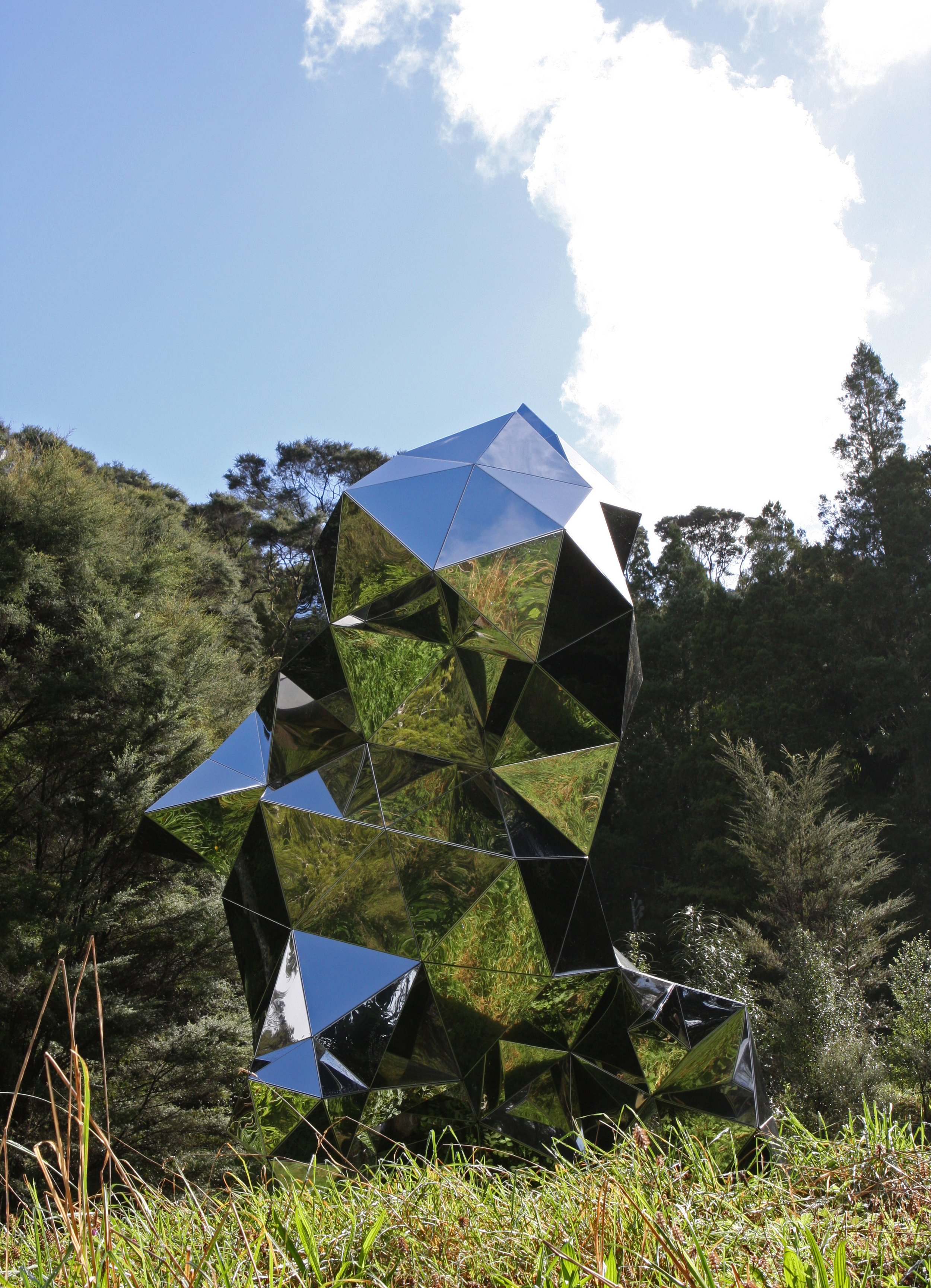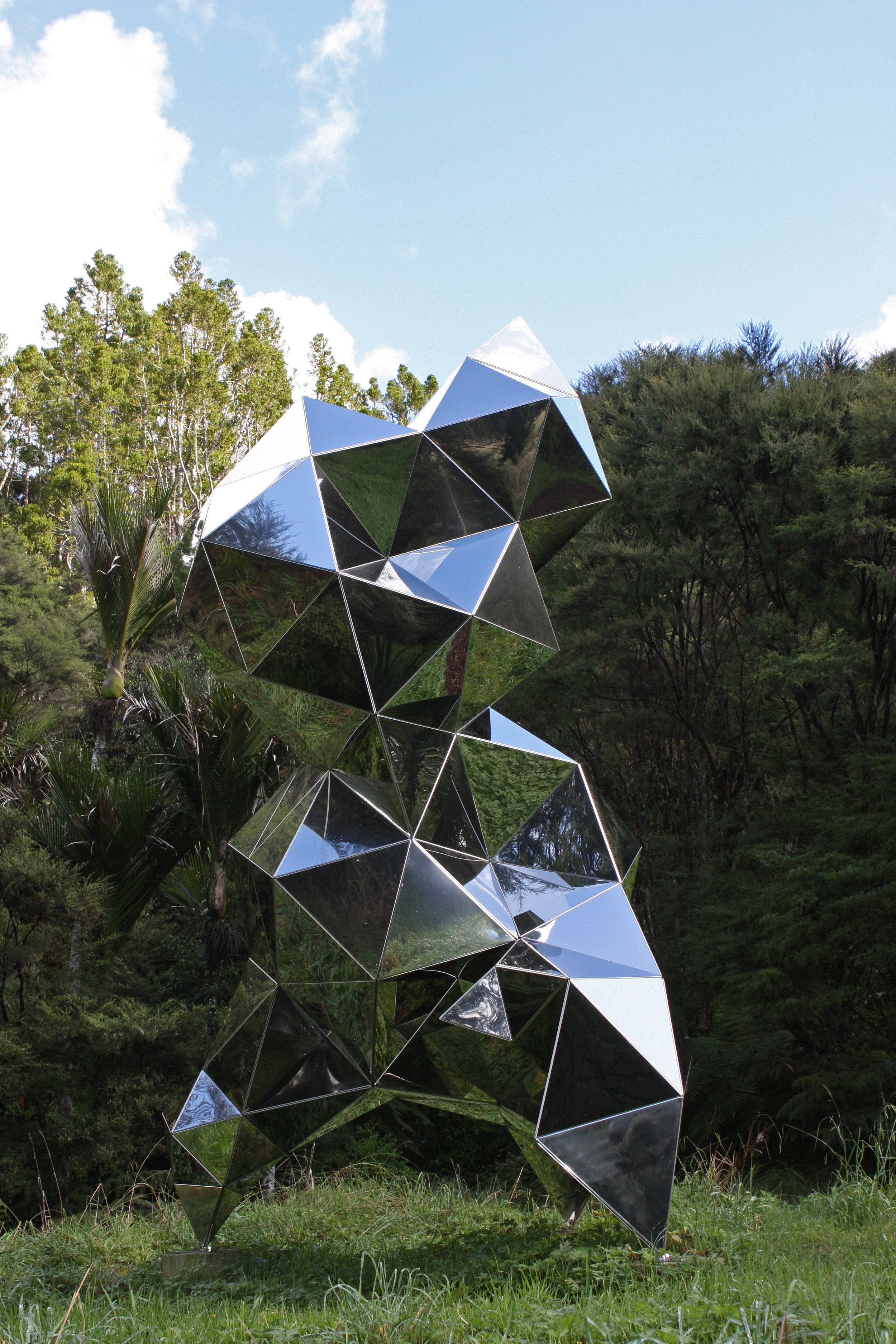GREGOR KREGAR
Polyhedron, 2006
Stainless steel
5100 x 3400 x 3400mm
Price on request
Proudly presented in association with Gow Langsford Gallery
Gregor Kregar studied fine arts in Slovenia before completing a Master of Fine Arts at the Elam School of Fine Arts in Auckland in 1999. His figurative and abstract sculptures are often comprised of a broad range of materials and convey a sense of the uncanny.
Recent sculptures reveal Kregar’s interest in geometric mathematical structures and their combinations and multiplications found in nature. Like Prstan, his winning entry in the 2000 Wallace Art Awards, Kregar’s Brick Bay Polyhedron is an investigation of ancient Platonic and Archimedean solids. A laser-cut, stainless steel Icosi-dodecahedron over five metres in height, the work grows into an Icosahedron, a Tetrahedron and other geometric shapes. Resembling a ‘blown up’ conglomeration of molecular structures, Polyhedron focuses on the aesthetic, formal and chemical similarities of natural formations such as crystals, ice and mountains.
Initially, Brick Bay’s highly polished Polyhedron appears as a foreign – even alien – intrusion upon the landscape. Upon closer inspection, however, the artwork replicates it physical environment. Paddocks, trees, water, even viewers are reflected in the sculpture. In turn, its very shape echoes the macrocosmic construction of natural elements by imitating natural molecular systems.
Kregar observes, “In nature everything is built out of three basic triangular systems and their combinations and multiplications.” The molecular structures that generate these natural forms are constructed in the shape of Platonic and Archimedean solids. Archimedean solids are derived from the five Platonic solids; the cube, the dodecahedron, the Icosahedron, the octahedron and the tetrahedron. Described by Plato as ‘cosmic figures,’ each shape was aligned with the elements of fire, air, water and the materials of which the constellations and heavens were made. Thus Polyhedron embodies the very essence of the environment; visualising the unseen in the organic.
Other work



















